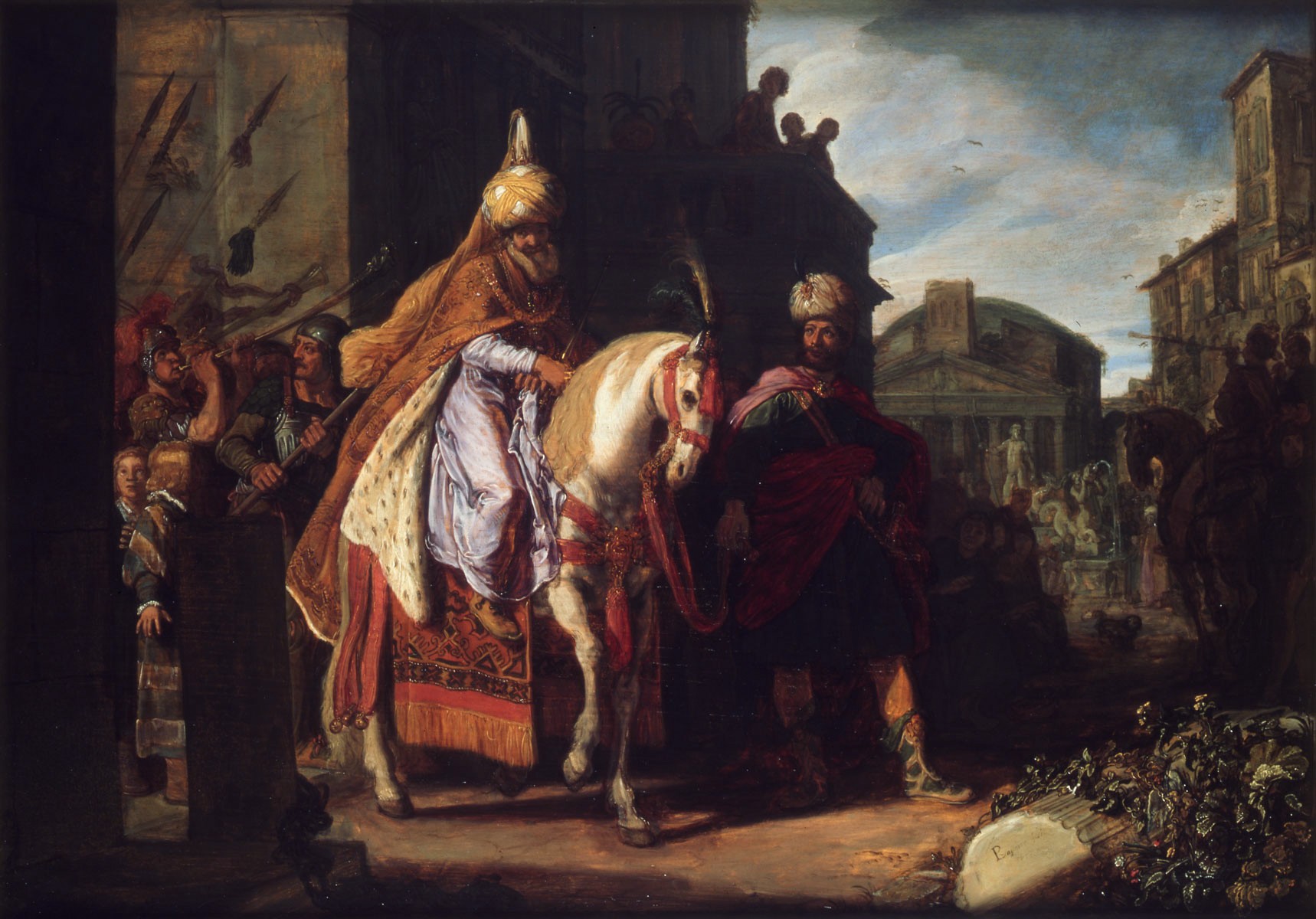Overview: The dispute between Rashi and Rabeinu Tam regarding the order of the Tefillin. How can there be arguments on commandments from Sinai. Giving a historical perspective to the dispute.
There are two sets of Tefillin donned by many religious Jews every morning. The reason they wrap two pairs is in order to fulfill the obligation as set forth by Rashi and by his grandson Rabeinu Tam. In every tefillin box there are four compartments each containing a portion of the Torah. While the four portions are agreed by all, there’s an argument in which order the portions are placed. These two opinions are known as Rashi and Rabeinu Tam. The Halacha follows Rashi’s position and it is only obligatory to wear a Rashi pair of Tefillin.
There’s a pretty obvious question here. Tefillin was put on every morning by all observant males in the Jewish community going back to Moses’ times. Why then does an argument arise only in the times of eleventh-century rabbinic scholars Rashi and Rabeinu Tam? Why couldn’t they just continue the tradition of how it was donned until their times?
This question is the focus of much discussion as it teaches us much about the history of the Oral Law in general.
Firstly, it would seem odd if Moses taught one specific way and that way would get forgotten and two opinions would then develop. If Moses truly taught one specific way then it wouldn’t have been forgotten, given that males in the Jewish community were donning the Tefillin every day.
Some suggest that the argument was around going back many generations, perhaps until the generation of Moses himself. But this suggestion falls short. The Talmud doesn’t mention anything of this argument when describing the Tefillin’s Torah portions. The Talmud was never hesitant to write about an argument, here should have been no different. This suggests that the argument only developed later. In addition, the question still remains how the argument developed in the first place, be it at the time of Rashi and Rabeinu Tam or be it beforehand.
There’s a popular myth found in modern Jewish works that claim that the two pairs of Tefillin, that of Rashi and that of Rabeinu Tam, were found among the Dead Sea Scrolls. But this is actually far from the case. In reality, the Tefillin found are different than both Rashi and Rabeinu Tam’s version. If there is any truth to the myth it is that one of the pairs more closely resembled Rashi’s version while another more closely resembled Rabeinu Tam’s.[i]
To solve this issue, there is no reason we cannot suggest that the specific order of the Torah portions in the compartment is of rabbinic origin.[1] True, the four portions themselves are arguably a directive from Moses passed down in tradition, but the order that it must be in is merely rabbinic.[2] Until this rabbinic enactment, anyone can have their Tefillin in any order they prefer. This explains why we find many pairs of Tefillin throughout the Second Temple era that each have a different order than the other.[ii] There was simply no specific order it had to be in. In fact the wording in the Talmud[iii] doesn’t seem to put much significance to the order. For this reason, the sages in the Talmud argue whether or not reversing the order of the Torah portions invalidate the Tefillin or not. If it were a directive from Sinai, it would seem obvious to all opinions that doing otherwise would invalidate the Tefillin.[3]
Now, where do Rashi and Rabeinu Tam get involved? They get involved in their interpretation of the Talmud. From the wording of the Talmud, there are two equally valid ways of understanding the order. Rashi, in his commentary, explains one way, while Rabeinu Tam, in his commentary, explains another way. They each had their own way of understanding what the rabbinic enactment was.
But why couldn’t they just look at how Tefillin were made until their point?
It seems that there were both types of Tefillin still laying around the Jewish community. Since there was an opinion in the Talmud that reversing the orders doesn’t invalidate the Tefillin, some communities kept to their specific way of ordering the Tefillin. Although the rabbis instituted a specific order, the cities who followed the lenient opinion (that doesn’t invalidate the Tefillin) kept the tradition of their ancestors who would write the Tefillin in a different manner.
Thus by the time Rashi and Rabeinu Tam were around, there were still communities with “Rashi” Tefillin and those with “Rabeinu Tam” Tefillin, in keeping of their tradition that predated the specific rabbinic order. Therefore both Rashi and Rabeinu Tam could find Tefillin of previous generations that supported each of their opinions. In fact, Rabeinu Tam says[iv] that the Tefillin of Rav Hai Gaon were found to be like his opinion.
___________________
[1] This answer is given by Rabbi Menachem Mendel Kasher in his work titled Torah Shleimah. It can also be seen here: http://hebrewbooks.org/pdfpager.aspx?req=51450&pgnum=284
There are many details in the Tefillin that are clearly of rabbinic origin. For example, the Shin that Halacha mandates to be on the Tefillin box couldn’t have been said by Moses at Sinai. That is because the letter Shin, as we have it now, wasn’t even around at the times of Moses. See footnote in chapter “Is the Torah’s Text Accurate?” for a discussion on the ancient Hebrew script. See as well chapter “Laws from Moses at Sinai” where we discuss that not every time that the Talmud says halacha lemoshe mesinai does it literally mean it.
Same thing goes with when we are to don the Tefillin. Halacha mandates that we wear them once a day (during prayer). In ancient times, it was worn the entire day, at least by some people. Nowadays, we don’t put Tefillin on the Sabbath and even on the second day of Yom Tov which is a rabbinic holiday. From this we see that the biblical Mitzvah to don Tefillin isn’t time-bound (similar to many Mitzvos, e.g. giving charity) and the sages later sought to codify a unified practice when to wear it and when not.
Other aspects of the Tefillin, such as its square shape, its black color, its leather material, its content etc., may have been a rabbinic decree or may have came from Sinai. We have no way of knowing. It’s interesting to note here that among the Dead Sea Scroll artifacts, Tefillin were found. They were diverse in its nature, with some of them containing the Shema, some of them the Ten Commandments, and some weren’t even square. Was this before the rabbis implemented a standard Tefillin or were these people simply rejecting the tradition as passed down from Sinai? We have no way of knowing.
However, it should be noted, that there is the possibility that the entire commandment of Tefillin and Mezuzah are of rabbinic origin rooted in the spirit of the Mitzvah expressed in the verses here. But this is a lengthily topic and an inconclusive one with evidence both for the biblical aspect of Tefillin and Mezuzah and the rabbinic aspects of it. See Rashbam on Exodus 13:9 where he sees the verse as not expressing a commandment to don Tefillin but as a metaphor. (See there. Also see Ibn Ezra on the verse where he disputes this assertion of Rashbam.) But the counterargument is that in the some of the places it speaks of “placing it as a sign on your hand and remembrance between your eyes” it doesn’t come in the context of metaphors.
[2] As for the reason why the sages would implement this specific order, perhaps it was, like many things they enacted, to make a unified practice within world Jewry. The rabbis didn’t think it was healthy for Judaism when each community or person did their own thing. They much preferred that everyone practice a unified code of law.
[3] According to the opinion that it does invalidate, it is because the rabbinic enactment was implemented so strongly to the point that if changed, it should invalidate the Tefillin. That is to say that it is rabbinically invalid.
[i] http://thegemara.com/the-real-origins-of-the-rashi-rabbenu-tam-tefillin-dispute/
[ii] http://thegemara.com/the-real-origins-of-the-rashi-rabbenu-tam-tefillin-dispute/
[iii] Menachot 34b.
[iv] Tosfos on Menachot 34b.





I’ve just discovered your website, and it’s really marvellous. You develop a path that fits with modernity and though allows traditional faith and observance to survive, even strengthened with solid rationalistic and logical background. Really nice.
Thank you for the kind feedback (: